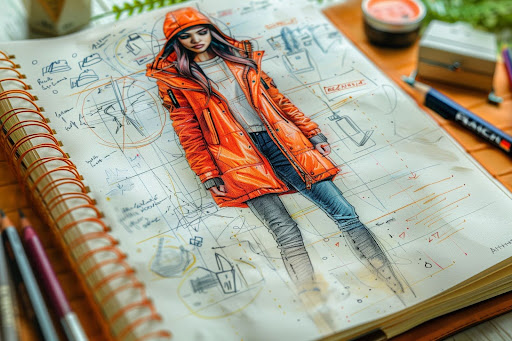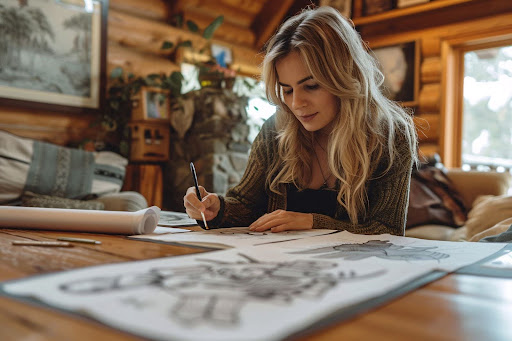Ultimate Ashley Ann Tahigan Full Storyboard Guide Revealed!

Ashley Ann Tahigan Storyboard Guide: An Introduction
The Ashley Ann Tahigan Storyboard Guide she has created is useful for those who want to learn about the significant aspects and tips crucial for the making of storyboards for novices and professional artists. Here, Ashley Ann Tahigan offers an elaborate account of her storyboarding indicating her methods and ways through which her guide can bolster your storyboarding abilities.
Through storyboarding, the visuals are brought on a storytelling platform commonly used in films, commercials, and animations. A good example of this is Ashley Ann Tahigan, probably the best story told today, a professional in storyboarding with a creatively inclined procedure.
Ashley Ann Tahigan is one of the best-known designers and her approach to work consists of creativity, clarity, and efficiency. You are going to learn how to incorporate it in your stories.
What is a Storyboard?
A storyboard is a picture of the movie, much as a comic strip is for a comic film. It describes the plot of a story by key pictures and annotations. Every single rectangle in the work is considered a scene; every single rectangle contains a particular moment. It may be helpful to think if it as a way of planning out the experience that your characters undertake.
This assists film directors and animators in conceptualizing on-screen content before filming or drawing. By using a storyboard you create less and avoid making many mistakes in addition to ensuring that the ideas flow well.
Why Storyboarding is Important?
Storyboarding is helpful since it is involved in planning the line of the story. While thinking about it, can you think of reading a book without sections, such as chapters; it would be chaotic! Storyboarding works like sections or chapters in a book and gives each scene a location and also a Relationship.
Besides, they can try different points of view, emotions, and gestures in the created object. In this way, they make conclusions about what looks better before starting the shooting or illustrating.
Who is Ashley Ann Tahigan?
Ashley Ann Tahigan is a gifted artist and scripter famous for her style of storyboarding. A specialist in animation and visualizing ideas on paper Ashley has worked on numerous projects, always succeeding at appealingly presenting the idea. Her strengths do not only include making beautiful images, but also how to capture emotions and doing actions well.
Ashley has become many up-and-coming publishing creators’ goddesses for her knowledge of how to storyboard and the best techniques and tips to incorporate in the process.

Key Elements of Storyboarding
Ashley Ann Tahigan pointed out some significant factors in the case of storyboarding as follows. It is for this reason that I will expand on these elements to help you acquire a better understanding of how to create your storyboards.
1. Characters and Expressions
Let me start by saying that when you create a storyboard, the first thing that comes to your mind is the characters. Who are they? What do they look like? What is the mood for each scene? Ashley’s ideas consist of simple statements that each person should have an emotion that corresponds to the story.
For example, if your character is happy they should be shown with a big smile. There is no need to say something when they can send a message of sadness through a frown or tears. These expressions make it easy for the audience to feel apprehensive about the characters.
2. Scene Composition
So, the next stepping stone to our study of the scenes is how they are constructed. This is called composition. Composition defines how the subjects as characters, objects, backgrounds, and others in the context of drawing are arranged. Balance and focus are two more aspects Ashley is pointing at.
You’d like your audience to be able to see the areas of the options that correspond to the frame that you need. For instance, if the two characters are involved in a dialogue then the two characters have to be well illuminated and they should be in the middle of the screen.
3. Camera Angles and Movement
Another fun part of storyboarding is being able to select the camera shots and the maneuvering of the cameras too. Another character Ashley frequently loves to experiment with is shifting through points of view to get the right point of view of each scene.
A low angle is used to make a character appear strong and unthreatening while a high angle position is used to make a character seem fragile. Also, there should be a concern with the moving of the camera. Will it suddenly focus on an actor’s face or slowly scan a set? These choices can have a fairly dramatic impact on perceiving the story.
4. Transitions Between Scenes
Transitions are something like a link that refers to the transition from one scene to another. According to Ashley, transitions should be made to try the story into different environments so that it will easily flow. For instance, in the scene where one character is fleeing and the next, the same character reaches a location, the transition is possible with the help of ‘wipe’.
It also keeps the audience with you and since they have a format that they are familiar with, this makes it easy for them to follow you. Consider how you wish each scene to be linked to the subsequent one as you design your storyboard.
5. Text and Dialogue
Not always, words have to say something to make the pictures meaningful. It can be handy to either incorporate text into the shots or to write dialogue in the scene to make what the character says come across more clearly. Ashley also notes that to create a behavioral prototype you should jot down the scenes and main lines of other characters’ dialogs.
This does not only assist in expounding features of a story after reading it but also assists the actors in memorizing their scripts when acting is to begin.
6. Timing and Pacing
Last but not least, there is the timing issue. There is always a beat in a beautiful story. It’s important to have some moments to be speedy and charged, as well as some that can be sluggish and touched. Ashley also recommends that where possible when storyboarding, a particular scene should be timed.
Sometimes, arrows have to be drawn or timing notes have to be used to indicate how fast or slow something occurs. This will be helpful to all people, as they will be able to recognize the rhythm of the story and be interesting for the audience.

Ashley Ann Tahigan’s recommendations to storyline the process.
Housekeeping note: While the following are the bare essentials of outlining, here are some heeded tips Ashley Ann Tahigan shares about storyboarding.
1. Start with Thumbnails
Small sketches also known as thumbnails are among the favorite techniques that are used by Ashley. These are sketches done in a hurry and haphazardly which assist in putting down the ideas followed without the strain of particulars. This way, you concentrate on the big picture and the relationships between scenes. So once you have your thumbnails done, you can build further on them and come up with better storyboards.
2. Use Reference Images
Ashley also encourages the use of the so-called reference images. These are pictures that you use to set the tone for your scene or to depict how that setting ought to appear. For example, if you drew a picture of a place or a character and you want to be consistent in your storyboards, references can come in handy as well as ideas on your own. It is okay to get ideas from other places as well.
3. Collaborate with Others
As mentioned before, storyboarding isn’t something that you necessarily have to do on your own. People working with one another often can generate truly creative thoughts and additions to solution sets. Ashley insists that creators should show a storyboard to friends, family, or other artists. Feedback can deter you from bias and assist us in studying from a brand new point of view and improving on the work done.
4. Stay Flexible
During the process of storyboarding, it’s important to be as unrigid as possible. And sometimes ideas change and it is perfectly fine! Ashley then went ahead to emphasize that the storyboard is more of a map and not a strict set of practices. When composing a scene, take no pride in getting it wrong in the manner considered; you must change it. This is a very powerful idea that can make a difference and people should be open to changes.
5. Practice Regularly
As the last stereotype, it is important to note that practice makes perfect! However, Ashley said that the more one draws a storyboard, the better he or she is likely to be. You could also attempt to produce storyboards in dissimilar kinds or styles. Try out another character and another location. The procedure also has a lot to do with it because as often as you draw, the more you will find and hone your voice and storytelling abilities.
Conclusion
All in all, this paper provides an understanding of storyboarding through the Ashley Ann Tahigan storyboard guide. If you want to become a good storyboard artist, it is crucial to know the elements of storyboarding, assess Ashley’s tips, and try to use them while drawing. Just to recall, storyboarding is a free process inspired by the desire to create and experiment.
Well, get your pencils illustrate your pictures, and start storytelling today! Whether you are planning an animated series, short movie, or graphic novel, storyboarding will assist in materializing the vision.

FAQ’s About Ashley Ann Tahigan Storyboard Guide
-
Who is Ashley Ann Tahigan?
Ashley Ann Tahigan has been established as a professional when it comes to script writing and storyboarding using much-needed images in other projects, particularly in animated movies and series.
-
What is a storyboard?
A storyboard is a graphic text where a story is divided into scenes, just like in comic books, and linked through captions to support the navigation of content creators, such as filmmakers or animators, during creation.
-
That’s where storyboarding comes in and I will now explain why is it necessary.
Storyboarding proves valuable in mapping out how a story should unfold, where a given scene should be, how they should be shot, as well as easing any transitions between scenes. Another importance comes in timely communication between the various members of the working party.
-
What should be included in such a plan?
Elements of movement are character and expression, scene construction, camera positions and motion, scene changes, text, and dialogue, as well as time cues and rhythm.
Here are some tips and tricks Ashley Ann Tahigan offers for one to begin storyboarding proficiently. Get sketching—take out your paper and pencil and get to work right now!





ТОР БРАУЗЕР ПОЛЕЗНЫЕ ССЫЛКИ DARKNET САЙТЫ РУССКИЙ
WEBSITE: OPEN IN AN ANONYMOUS BROWSER (the link does not work in other browsers) http://torx5mtxatfovjmdizm27tsqusa4bgej5qx7zvv2quxvh44spl5xzsad.onion
LINK 218GB VIDEOS FOR TORRENT CLIENT: magnet:?xt=urn:btih:abd5aaed52b5994fe54136701c4c18156bd28415